
Beloved DXer, contester and referee for WRTC this year – Richard King, K5NA, of Texas, had become a Silent Key just a week ago. He was electrocuted while helping another amateur take down a Yagi from a tower. Read MORE ………….

Beloved DXer, contester and referee for WRTC this year – Richard King, K5NA, of Texas, had become a Silent Key just a week ago. He was electrocuted while helping another amateur take down a Yagi from a tower. Read MORE ………….

NEWS FOR SCOTLAND & CLUB NEWS (GB2RS) Extracts inc Additions
GB5SC (GB2RS Extract)
“……… At 7pm on the 6th of March 1923, BBC broadcasting in Scotland officially began. The studio was housed in a small attic apartment at Rex House in Bath Street, Glasgow, and the transmitter at Port Dundas. Using 1.5kW on 722kHz, the station was allocated the callsign 5SC. This year, 100 years to the day, the BBC Amateur Radio Group will be celebrating the anniversary with special event callsign GB5SC. Operation will take place on the 4th, 5th and 6th of March, from the present BBC Pacific Quay headquarters, using HF, VHF, UHF and QO-100. The BBC club team is being joined by operators from the West of Scotland Amateur Radio Society. For more information, visit the GB5SC page at QRZ.COM and the wosars.club website …………..”
CHANGE OF MEETING DAY
Wigtownshire Amateur Radio Club is pleased to announce that it is now meeting monthly on Saturdays. The next meeting will be at the AIRD Centre on Saturday the 18th of March from 11am to 3pm. Together with Dumfries and Galloway RAYNET group, there is an open net on GB3DG every day at noon. All are welcome. Every third Thursday of the month the club meets at the AIRD Unit in Stranraer, from 8pm to 9pm. There is also a net on GB3DG every Thursday from 7.15pm then joining with Zoom from 8pm. Oli, MM0YOS, info@gm4riv.org
TECHNICAL NET
As of Wednesday the 2nd of March, from 8pm until 9pm, George, MM0JNL is moving his Technical and Support Net to GB3BT, now the repeater is operating correctly. The net is open to anyone, within range, who has any radio-related issues and needs assistance or guidance. This is a peer-support net, the aim of which is to provide support to fellow amateurs. dr16@rsgb.org.uk
JUNK SALE
Aberdeen Amateur Radio Society will be holding a junk sale from 7pm on Thursday. Fred, GM3ALZ, 01975 651 365
TALK – WSPR introduction
Moray Firth Amateur Radio Society meets on the first and third Tuesdays of the month from 7.15pm to 9pm at the Elgin Reserve Centre. On the 7th of March there will be a talk and demonstration entitled ‘WSPR introduction’. GM8HWZ/MM0TQH www.mfars.club mfars.secretary@gmail.com
OTHER CLUB NETS AND MEETINGS
Details of club activities can usually be found on the individual club’s website. A summary of activities, Nets, Contacts and Links in Scotland can also be found at wosars.club/radio-nets
To have your net listed on the WoSARS website or to report any changes, contact Tony, MM0TMZ by email to rr1@rsgb.org.uk. Please also keep GB2RS updated via email to radcom@rsgb.org.uk
SUNDAY
Dundee Amateur Radio Club will be holding open nets on Sundays and Wednesdays from 7.30pm on GB3AG. The next Club Meeting will be on the Tues 28th February. Martin, 2M0KAU, 07763 708 933
Kilmarnock and Loudoun Amateur Radio Club holds a net on Sundays from 2pm around 3.720MHz using SSB, later moving to around 3.540MHz at 2.30pm for a CW net. Also on Sunday, the club will have a quiz night on 145.475MHz. Check-in for the quiz is from 7.45pm for an 8pm start. On Monday there will be a question-and-answer night on Zoom at 7.30pm. The next club meeting will be held on Tuesday the 7th March. Alternate Tuesdays see a natter night on Zoom at 7.30pm. klarcinfo@gmail.com
Kingdom Amateur Radio Society has nets on Sundays, Tuesdays, and Fridays from 7pm on 144.750MHz. Steve, MM0SKX, 0771 105 9343
The Lomond Sunday Night net takes place today. Early check-in is from 7.45pm. All the usual ways to join in are available, via Echolink MB7IBH-L and on 145.3375MHz locally across the Clyde Coast. Paul MM3DDQ mm3ddq@gmail.com
Stirling Amateur Radio Society meets at the Club House, Throsk, FK7 7XY at 7pm on Thursday. The club is open for projects and operating on Sundays from 10am. secretary@gm6nx.com
The Viking Amateur Radio Net runs on Sundays from 6pm on 3.660 or 3.639MHz. Details are on their Facebook page. (Note – checkout their Facebook Page to verify if this group is still active?)
MONDAY
DV Scotland has a multi-mode net on Monday from 8pm to 9.30pm using GM5DVS. This is via all DV Scotland Repeaters on Talk Group 23556. Time Slot 2. In addition, via Allstar HUB 53937 and Echolink MM1CXE. Details of how to connect are at dvscotland.net
Edinburgh and District Amateur Radio Society has a net on Monday at 8pm on 433.525MHz. Norman, GM1CNH, 0774 094 6192
Glasgow University Wireless Society net will take place on Monday evening around 145.525MHz from 6pm. Michael 2M0GUI, mm0wsg@neotes.uk
Ham Radio Network has a talk on the theme of An Evening with ???? … on Monday. See hrn.world
Paisley Amateur Radio Club holds a net on Mondays from 8pm on 144.550MHz and on Zello. Tuesday sees a DMR net in room 4415 from 8pm. On Thursday, there is an FM net on 144.550MHz and on Zello from 7.30pm. Stuart, MM0PAZ, 0742 665 0757.
TUESDAY
Glenrothes and District Radio Club has Morse tuition on 145.425MHz FM from 7.30pm on Tuesday and Thursday evenings. Check-in is from 7.15pm. Eric, GM4FQE, 01 333 450 753
Largs & District Amateur Radio Club meets on the Third Tuesday of every month and the next meeting will be Tuesday 21st March in The Largs Museum, 2 Manse Court, Largs. All are welcome. James, GM0GMN james@bertram.scot
Livingston & District Amateur Radio Society has a club night at Crofthead on Tuesday from 7.30pm. On Thursday there is a net on 145.575MHz at 7.30pm. Cathie, 2M0DIB, 01506 433 846.
WEDNESDAY
Caithness Amateur Radio Society has club nets at 2pm on Wednesday and Saturday on 3.740MHz. Club meetings happen in Skirza, near John O’Groats. Nigel, MM7BWT, Mansfield.n27@gmail.com
Galashiels and District Amateur Radio Society meets in the Focus Centre, Livingstone Place, Galashiels at 8pm on Wednesday. Jim Keddie, mail@gm7lun.co.uk
Inverness and District Amateur Radio Society will be on the air from 8pm via GB7BI or on BI Chat 475 if Highlands and Islands is busy.
Lothians Radio Society has its Viral Net on 144.350MHz USB at 8pm. Andy Sinclair, MM0FMF, secretary@lothiansradiosociety.com
Mid Lanarkshire Amateur Radio Society has a ragchew on talk group 23550 from 8pm to 10pm on Wednesday. On Thursday there is a net on 70.425MHz from 8pm. Friday sees the club meeting at Newarthill Community Education Centre, Newarthill, ML1 5JU from 7pm. Simon, 2M0LSG,Secretary@mlars.co.uk.
THURSDAY
Lomond Radio Club meets Thursday evenings in the club rooms at the John Connolly Centre in Renton at 7.30pm. Simon, MM0XME, mm0xme@outlook.com
The Online Radio Club has a virtual radio club night at 7.30pm every Thursday via Zoom. It is suitable for all radio enthusiasts regardless of individual skill level. Go to the website for the meeting link. onlineradioclub.org.
Wigtownshire Amateur Radio Club and Dumfries and Galloway RAYNET run an open net on GB3DG every day at noon. All are welcome. On Thursday, the net is on GB3DG from 7.15pm, then on Zoom from 8pm. Oli, MM0YOS, info@gm4riv.or
FRIDAY
Ayr Amateur Radio Group meets on alternate Fridays at Prestwick Community Centre from 7.30pm. The next club meeting will be held on Friday the 10th March. On alternate Fridays there is a Zoom natter. Derek, MM0OVD, 0742 899 461
Cockenzie and Port Seton Amateur Radio Club usually meets on the first Friday of the month for a club night in the lounge bar of the Thorntree Inn. The next club night will be the 3rd March meeting. Bob, GM4UYZ, 01875 811723, www.cpsarc.com
Strathclyde Park Amateur Radio Club has a net from 7.30pm on 145.400MHz, and in addition on the BATC channel from 8pm. Bill, MM0SFB, gm0syv@btinternet.com
West of Scotland Amateur Radio Society will have its usual Solder Group meeting from 6pm on Wednesday. The club will be meeting at 8pm on Friday at its Rose Street club rooms. Checkout wosars.club/calendar for further information.


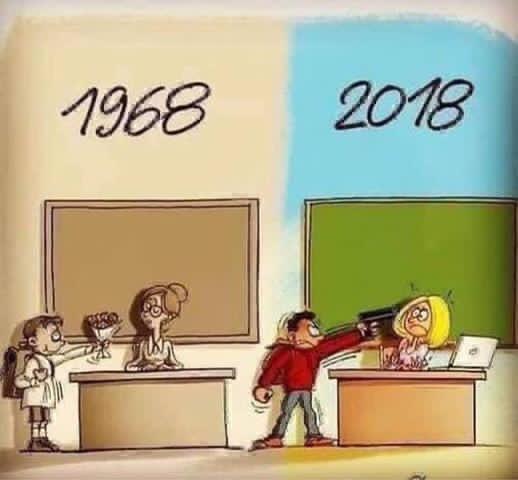
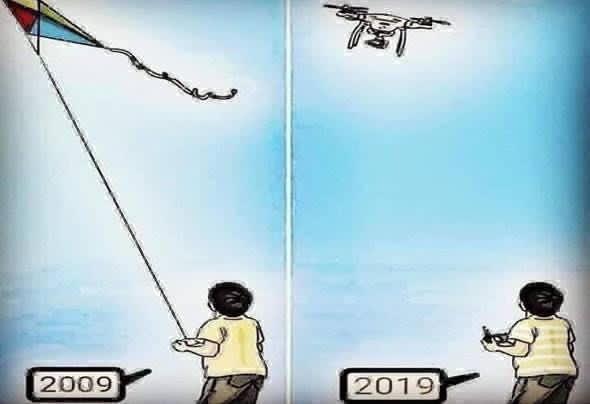
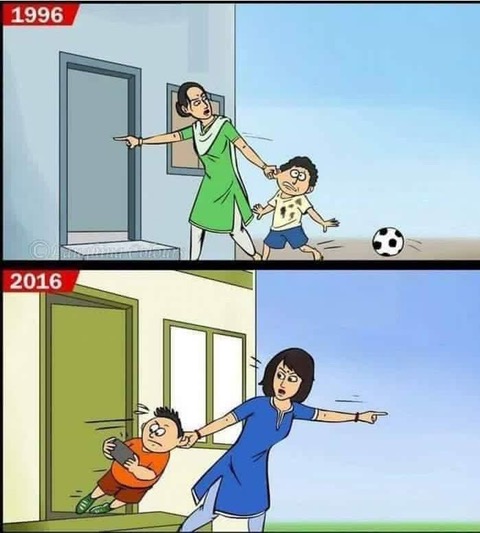




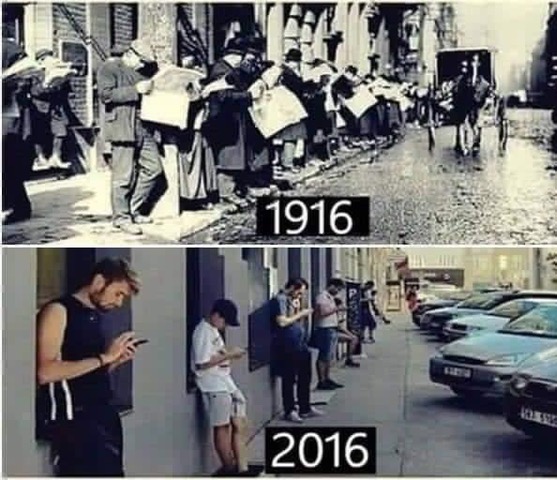
The Youth Working Group within IARU Region 1 have created a new program called “YOTA online”.
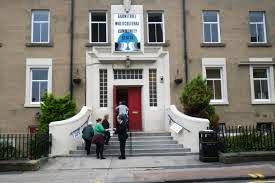
(Community Fund – Press Release)
“A community centre that lies at the heart of one of Glasgow’s most culturally-diverse neighbourhoods and a former school on the island of Eriskay in the Outer Hebrides are two of the projects that are set to pass into local ownership thanks to grants from the Scottish Land Fund.
Trustees of Garnethill Multicultural Centre, which has been offering help and support to people from many different backgrounds since 1988, have been given £329,576 to purchase the property they occupy and carry out essential repairs…………………………..”
Ross Donald, Centre Co-ordination, Garnethill Multicultural Centre said: “We are delighted to have been offered this grant. Owning the building will allow us to apply for desperately needed funds to refurbish the Multicultural Centre. We’ve leased the building for over thirty years and now, finally, the local community can decide where the money is best spent.”
The full article can be read – HERE.
Good news indeed!
A question was raised at the Club recently as to why we balance Li-Po’s and not cells such as NiCad or NiMh’s?
I certainly knew it was ‘done-practice’ in order to obtain maximum performance from Li-Po’s, but why not do the same for other battery types?
There is a good write-up in Wikipedia (click the graphic) as to why this is done.
And – the bottom line – it appears, that it could be done with most types of battery packs, which in the end would improve their performance and extend their longevity – just as Li-Po’s.
So now you know!
Edit 05/07/19:
Following on from some questions raised on our Members Forum #73 – HERE is some additional information about Active Balancing and associated circuits, courtesy of Analog Devices.
The first May Bank Holiday weekend sees the annual three day RSGB ARDF Championships taking place in the Thames Valley. The areas chosen are Christmas Common near Wendover, Whiteleaf near Princes Risborough and Hodgmoor Woods near Amersham.
SOS Radio Week will take place between 0000UTC on the 1st May and 2359UTC on the 31st of May
From the 4th to the 31st of May, GB9SOS will be operating as part of SOS Radio Week. The station will be operating on as many different HF and VHF bands as possible during the 28 days the station will be active .
Es signals from Czech Republic, Ukraine, Poland, Italy, Spain, and the French beacon F5ZEH beacon on 28.231MHz, were heard on Thursday the 25th at 1300UTC. Don’t forget that Sporadic-E can affect all the bands from 20m to 10m. The best guide may be the 10m beacons across Europe, which can act as good propagation indicators.
On Thursday Wigtownshire Amateur Radio Club has short talks by Peter Salmon, GM7NFF, Wul Murdoch, 2M0WUL and Ian Macdonald, GM8AVM. Contact Bob Bower, GM4DLG, via email to info@gm4riv.com.
For more news visit GB2RS – HERE .
Hi all,
Well Sam – GM4BGS & myself braved a very wintery day to head through to Burntisland. And it was well worth it. The ‘Prof’ provided the audience with an interesting insight as to how Reginald had helped with pre-war & war scientific investigations which in turn evolved into effective wartime ‘counter-measures’.
Here is Sam’s take on the Professor’s presentation. (thanks Sam)
And checking through the latest MOC Presentations this one – ‘From Sputnik to Cubesat – Outer Space’ HERE , I think is most relevant to ourselves. However all current MOC Talks are on our CALENDAR.
Enjoy
(;>J
(Pictures Professor Tom Stevenson – emailed to GM4COX – a big thanks!)
Museum of Communications 16th March 2019
Goudie Lecture 2019.
Introduced by Professor Tom Stevenson
Why Churchill Wages R. V. Jones’ Most Secret War
Prof. Joe McGeough
The Museum of Communication was very pleased to welcome back Prof. Joe McGeough, who was a friend and colleague of our benefactor, the late Dr George Goudie to deliver the talk on R. V. Jones’ Most Secret War.
RV Jones had a distinguished career in scientific intelligence during WW2. He used his knowledge of physics to monitor the technical developments of the enemy and he sometimes used his great experience as a practical joker to devise countermeasures! He analysed the use of radio beams by German bombers for navigation at night and devised a simple but very effective method of confusing enemy RADAR.
PROFESSOR REGINALD VICTOR JONES
Reginald Victor Jones was born on 29 September 1911 at Dulwich, London. As a child, he learnt Scottish songs from his mother, and through his father, respect for military traditions. Living close to the Oval, he was a staunch supporter of Surrey Cricket team; his hero was Jack Hobbs. At the age of eight, he contracted diphtheria, which left him permanently deaf in one ear.
His Headmaster, R B Henderson, at Alleyn’s School, Dulwich, exhorted service to school, community and country; Reginald Jones was a proud member of the Officers’ Training Corps, and as a hobby enjoyed making radio-receiving sets. Good teaching brought an Open Exhibition to Wadham College, Oxford in 1929. Jones gained a First Class Honours in Natural Science- Physics (1932) and the same year, he was runner-up in pistol-shooting at Bisley.
Under Oxford’s Professor of Experimental Philosophy, F A Lindemann, he began research on infrared detectors, being awarded his doctorate at the age of 23. During a subsequent post at Balliol College, Jones was commissioned to develop an infrared detector for installation in night-fighters for detection of bombers. In 1936 he was appointed a Scientific Officer in the Air Ministry. His duties included trials on the first air-borne television equipment for the RAF, and study of Air Intelligence reports. On his transfer to the Admiralty Research Laboratory, Teddington, he was to meet in 1938 Vera Cain when she chased away a squad of physicists who were trying to dig shelter trenches on her women’s hockey pitch. They married in 1940.
After the invasion of Poland he became attached to the Air Intelligence branch of MI6, studying files on potential German weapons and ways of ‘breaking’ the German Enigma encoding machine. He unravelled the contents of the Oslo Report on German dive-bombers, remote-controlled rocket-driven gliders, radar detection of enemy aircraft positions and radio monitoring of range of bombers.
On 11 June 1940, Jones read a decoded Enigma message which convinced him that the Germans had an intersecting radio beam system for bombing England. A special meeting at 10 Downing Street was called for 21 June, to which Dr Jones unexpectedly found that he had been invited. The Prime Minister let the 28-year old explain the beam threat, right from the start. Equipment was urgently developed, the effect of which was to steer German aircraft off the proper beam path, depriving pilots of their inherent accuracy, (although both enemy and home forces believed that the beams had really been bent).
A few nights before 7 September, when the nightly bombing of London began, Jones was alerted, through Enigma, to a new kind of beam, ‘X-Gerät’, fitted to an aircraft of KGr100, that dropped flares over its targets and which had already been used to attack Birmingham. He was able to identify the location of KGr100 attacks, yet night fighters repeatedly failed to find the enemy aircraft.
Subsequent examination of captured X-Gerät apparatus revealed equipment changes enabling German pilots to distinguish between the true beam and defence jamming. On 10 November 1940 he received a decoded Enigma signal on operations to be carried out on Wolverhampton, Birmingham and Coventry. An Enigma message of 11 November described an operation on areas that were not disclosed. Churchill thought that it was to be London. Instead, Coventry was heavily bombed, with the loss of 554 lives. Jones had been able to predict the correct radio frequencies. When he predicted Wolverhampton as the next target and had the anti-aircraft batteries moved, no attack occurred. However, two prisoners revealed that German reconnaissance had noted the installation of the antiaircraft guns, whereupon the Wolverhampton raid had been abandoned.
Dr Jones’ work was recognised by the Secretary of State, Archibald Sinclair, who in 1941 recommended senior promotion. Instead, he was upgraded to Principal Scientific Officer, with the title Assistant Director of Intelligence (Science), which post he held for the rest of the war.
Churchill’s plans for a sustained air bombardment of Germany now saw Jones concentrating on understanding its ‘Würzburg’ system of night defence. His close relationship with airmen taking aerial photographs was a key to the success of British scientific intelligence. Photography of a Würzburg paraboloid in the Berlin Tiergarten and other sites uncovered an elaborate German night interception system. Jones showed the photographs to Lindemann, and on 10 June 1942, many paraboloids were destroyed by Bomber Command. After examination of reconnaissance photographs with his colleagues, Charles Frank pointed out to Jones that the isolated Würzburg at Bruneval, south of Dieppe, could be captured. Jones promptly set the wheels in motion, and in a daring Combined Services raid, the main parts of the Würzburg and its frightened operator were seized. With Churchill’s concurrence, Jones was recommended for a CB. However, this honour was considered by others to be beyond that appropriate to the Scientific Officer grade, and in 1942, the ‘compromise’ of a CBE was announced.
In 1942, he had advocated the use of spoof echoes from aluminium strips, subsequently code-named ‘Window’. Released from a leading aircraft, these would produce the radar equivalent of a smoke screen through which succeeding aeroplanes could fly. Window is reported to have saved 70 to 80 aircraft in the devastating attack on Hamburg in July 1943.
Dr Jones was present at a meeting on 31 August 1943, called by Churchill, to review an intelligence report on bombs guided from aircraft. The information had come mainly from a 23 year-old member of the French Resistance, known as Amniarix, now Vicomtesse de Clarens. Jones was to comment that her “reports stand brilliantly in the history of intelligence”. Two weeks later, he reported a warning from Amniarix of attack by rocket-driven pilotless aircraft, on which Churchill acted. On 21 December 1943, 1300 American aircraft dropped 1700 tons of bombs on German rocket sites. About this time, R V Jones first became involved with USA military intelligence, whose scientific advisor, H P Robertson, visited him and reported back that the British work was entirely reliable and they should give as much aid as possible. In the meantime, Window was still having its effect: Goering observed, “in radar, they must have the World’s greatest genius”.
On the eve of the Normandy landings (June 1944) air attacks, following advice from Jones’ group, eliminated most German radar sites in Northwest France. Only about six out of 47 stations were still able to transmit on D-Day, just enough to provide the Germans with information on the approach of a large sea-force, which in fact was a hoax decoy, produced by several aircraft scattering clouds of Window to simulate a fleet of destroyers. The German mobile defences were thereby drawn away from the main invasion landing sites. The official Despatch concluded: “These attacks saved the lives of countless soldiers, sailors and airmen on D-Day”.
Fears that the Germans were working towards an atomic bomb brought Jones into contact with Niels Bohr who had come to England in 1943. Bohr became his firm friend, and was a great favourite of the Jones’ children (as was another Nobel Prize winner, Edward Appleton). With nuclear intelligence now shared between the Allies, the Americans found Jones a determined fighter as they all strove for access to German documentation. Nonetheless, they recognised his integrity and formed a cordial life-long regard for him. He earned the Prime Minister’s further respect when he had to deliver to him the unwelcome evidence of V1 and V2 rockets about to be launched on London. Jones’ value to Scientific Intelligence was so great that if he had participated as he had planned in the August 1942 raid on Dieppe, in which the Canadians suffered heavy casualties, secret orders had been issued for him to be shot if he were about to fall into German hands.
In the 1946 New Year’s Honours Lists, Jones found his name amongst the CBs. Churchill and Lord Cherwell (Lindemann) were now out of office and there had been no customary intimation from the new Prime Minister’s office. He could only surmise that he had been treated as a Serving Officer who would be expected to accept an honour without discretion – he was delighted to do so. As his contributions were hidden in official secrecy, feelings arose that both decorations had been conferred on him as Lindemann’s blue-eyed boy, although the truth was far different.
The plans for post-war Scientific Intelligence left Jones uncertain of his future. His wartime colleague, Professor Edward Wright, who had returned to Aberdeen University, suggested that he should apply for its Chair of Natural Philosophy. Despite strong competition he was duly offered the post. On 30 September 1946, he resigned from the Civil Service. Within three days Professor Jones was preparing for a new term at Aberdeen University, having to cater for 300-400 undergraduates, with nine staff including himself, three of whom were new graduates aged 21. There were no textbooks, so he used to write out full notes of his lectures for distribution to students. When the typing load on his sixteen-year-old secretary became too heavy, a girl student volunteered her services.
A tremendous spirit prevailed in his classes. He enjoyed the warmest of relationships with his students many of whom were ex-servicemen. They regularly met him in the Students’ Union near Marischal College, where he was usually invited to play pipe tunes on his mouth organ. The porter, an enthusiastic piper, would correct Jones’ music, forgetting to close the bar at 10pm. A legend arose that he knew every one of his several hundred students. They in turn believed that they knew him, and could approach him at any time. Those ten years from 1946 were the happiest of his tenure of the Chair of Natural Philosophy.
He concentrated almost entirely on his teaching and research. His aim was to make physics lectures as interesting as possible with lively demonstrations. The highlight became his final lecture of the session. More than 300 students from all over the University would pour into a 138-seat lecture theatre to hear him. No attention was paid to time, and the party would go on for more than two hours; the conservation of momentum was demonstrated with a pistol and bullets, and dead pigeons dropped from the ceiling as part of an illustration of Heisenberg’s Uncertainty Principle. The din created by the students could be heard throughout Marischal College.
He introduced feared Honours written and practical examinations, all tests of ability to think about basic principles, for analysis of problems. Through the Natural Philosophy course he was determined to raise Aberdeen students to high standards that made them readily employable anywhere. With colleagues, W J Bates, D A Jones, C W McCombie and J C S Richards, supported by highly skilled technicians duly led by H Barber, he undertook wide-ranging researches: of instrument design, optical levers, capacitance micrometers, measurement of small displacements, crystal growth and the radiation pressure of light in dense media. These studies led to a series of papers in Proceedings of the Royal Society of London. He was elected a Fellow of the Royal Society of Edinburgh in 1949.
Soon there were extra-mural calls for him to join and chair innumerable government and scientific committees. Over 1952-53, at the request of Churchill, he was granted leave from the University to return to the Ministry of Defence where the organisation of post-war Intelligence was giving concern to the Prime Minister. It proved a thankless task, with long absences from his wife and young family in Aberdeen, little reimbursement beyond his University salary and resentment encountered as he tried to change the arrangements for Intelligence. A senior official explained to Mrs Jones that whilst her husband had a first-class mind, a less brilliant man would have better suited the Ministry.
About 1955, Professor Jones was nominated by Lord Cherwell, with support from Sir Edward Appleton and Sir Francis Simon, for Fellowship of the Royal Society of London. A member of its Selection Committee encouraged him to concentrate on his research, to clinch his early election. With typical candour, he decided that the research effort needed would detract from his teaching, and that his students had priority over his own advancement. He had to wait until 1965 for election as FRS.
In 1956, R V Jones became Dean of the Faculty of Science at Aberdeen and joined the University Court. There were, however, adversaries, two of whom, concerned about the vacant Principalship in 1962, lobbied The Scottish Secretary of State against him (although Jones had not even considered the possibility).
When the Robbins report advocated doubling the University population in just over three years, Professor Jones warned that such rapid expansion could only lead to a fall in standards of student entry and in the quality of staff recruited to teach them. Aberdeen found that its traditional North of Scotland student catchment was being plundered, as other Universities shored up their numbers. Jones maintained that Aberdeen could counteract the drain only through departments with outstanding reputations that were attractive to both good students and staff. His arguments caused furore. His children, Susan and Robert, as students had to endure academics’ criticisms of their father, ‘the most unpopular man in the University’.
Despite many offers of Vice-Chancellorships and Headships of research establishments, he decided to remain in Aberdeen. He meticulously planned the new Natural Philosophy building, which he and Mrs Jones toured weekly during its construction. Locally, he took a great interest in secondary education; when Engineering Science was introduced, he met the heads of technical departments from Aberdeen schools to emphasise the significance of their subject. In 1967, Professor Jones chaired the organising committee for the British Association Technology Fair in Aberdeen, involving local schools and major companies. The meeting was a great success, especially when traces were displayed in the Natural Philosophy Department of the explosion of the first Chinese nuclear device. He strongly supported the study of Engineering in Universities, and especially at Aberdeen. His MSc course in ‘Principles of Instrument Design’ produced post-graduates who found ready employment in major industry throughout the world. A plaque in R V Jones’ honour is displayed at the Philips Company, Eindhoven.
He continued to promote the public understanding of science. His writings reflected concern that scientific and technological advances should benefit the nation. For 20 years he edited the Notes and Records of the Royal Society, and served as a Vice-President from 1971-72.
In 1977 he was offered a Knighthood in the Jubilee Honours List. He felt that tenure of Knight Bachelor was only minimally above that of his Companionship of the Bath; it represented least recognition for more than thirty years of public service as a member or chairman of many committees or councils, and the separation from his family for 18 months in 1952/53 in the Ministry of Defence. Vera Jones, to whom it would have meant most, agreed the offer appeared to be “too little, too late”. In declining, he asked the Prime Minister’s office to convey his thanks to those who had proposed him.
His decision had unfortunate repercussions. Knowledge of his contributions grew, especially after publication of his bestselling Most Secret War (1978) and other Intelligence stories. Many asked him about a Knighthood. Others submitted his name to the Prime Minister’s office. Since, in accordance with protocol, he could not reveal to them that he had been offered a Knighthood, he could only be privately sad at the prospective failure of their generous efforts. Speculation arose that he had upset too many in authority, or had committed some undisclosed heinous offence that had disqualified him. Mrs Jones found this back-biting especially hard to bear, without being able to break a silence that would have set the record straight.
These vindictive whispers might have been silenced in 1980, when a group of peers moved to recommend him for a seat in the House of Lords. The start of their action coincided with adverse publicity concerning his tenancy of 8 Queen’s Terrace, Aberdeen which he and his family had occupied since 1947. On approaching retiral, he offered to vacate this University house, only to be assured by senior staff that he could remain. Management and attitudes changed. Although a legal action brought against him was decided in his favour, the case left its unfavourable shadow. His supporters for a Peerage did not proceed with their nomination. However the many letters to Downing Street must have had some effect.
On 3 May 1994, the Prime Minister recommended Professor Jones as a Companion of Honour, which ranks immediately below the Grand Crosses of the usual orders of Knighthood, and above the Knight Commanders of these orders. In accepting the Honour, his main regret was that his wife and his mother had not lived to see it (although the latter had been aware of the Knighthood declined 17 years before).
Vera Jones died in 1992. The disquiet over the house and her husband’s removal from the office allocated to him as Emeritus Professor, caused them both sleepless nights, and marked the beginning of a deterioration in her health. A month after Vera’s death Reginald Jones was to find his daughter Susan, a diabetic, in a coma and dying. Throughout his retiral, R V Jones continued to lecture and to write. In 1981, he presented the Royal Institution Christmas lectures. The highly regarded books Instruments and Experiences (1988) and Reflections on Intelligence (1989) were published. In 1993, he became the first recipient of a new medal ‘The R V Jones Intelligence Award’ created by the CIA. The Americans always respected his achievements. He was awarded the American Medal of Freedom with Silver Palm (1946) and the US Medal for Merit (1947); he received honorary membership of the US Air Force and numerous other accolades. They sought his advice following the mysterious TWA plane crash in 1996. Many other foreign and British medals were presented to him in recognition of his contributions.
In the UK, seven universities conferred honorary degrees on him including a DSc from Aberdeen in 1995. He loved Aberdeenshire and its people. They made him Bailie of Benachie and regularly welcomed him to his home, ‘The White House’ at Corgarff, where he, Vera, and their three children, Robert, Susan and Rosemary spent many happy holidays. With his friends he fished and shot. When he died on 17 December 1997, it was fitting that he should be buried at the local Strathdon Cemetery. His University paid its tribute with a memorial service at King’s College in April 1998. His friend from the Resistance, Vicomtesse de Clarens came to “thank you, dear unique Reg”. His colleague Professor Michael Player asked that Professor R V Jones should be remembered as an “extraordinary and inspirational Natural Philosopher”. The Hon James Woolsey, former Director of the CIA, gave an American’s recognition of this prophet in another land: R V Jones was steadfastly honest, courageous with integrity and truthfulness, with a real interest in others – those whose lives he saved, who never knew him, and those who were privileged just to meet and know him.
I vow to thee, my country, all earthly things aboveEntire and whole and perfect, the service of my love.
Ken Horne – GM3YBQ Presenting Joe With A ‘Wee’ Thankyou!
Sir Alan Cook, Professor W E J Farvis, Mr R Jones, Dr I Olson, Professor M A Player are thanked for their help and advice.JOSEPH McGEOUGH
© 2019-2023 WoSARS.Club